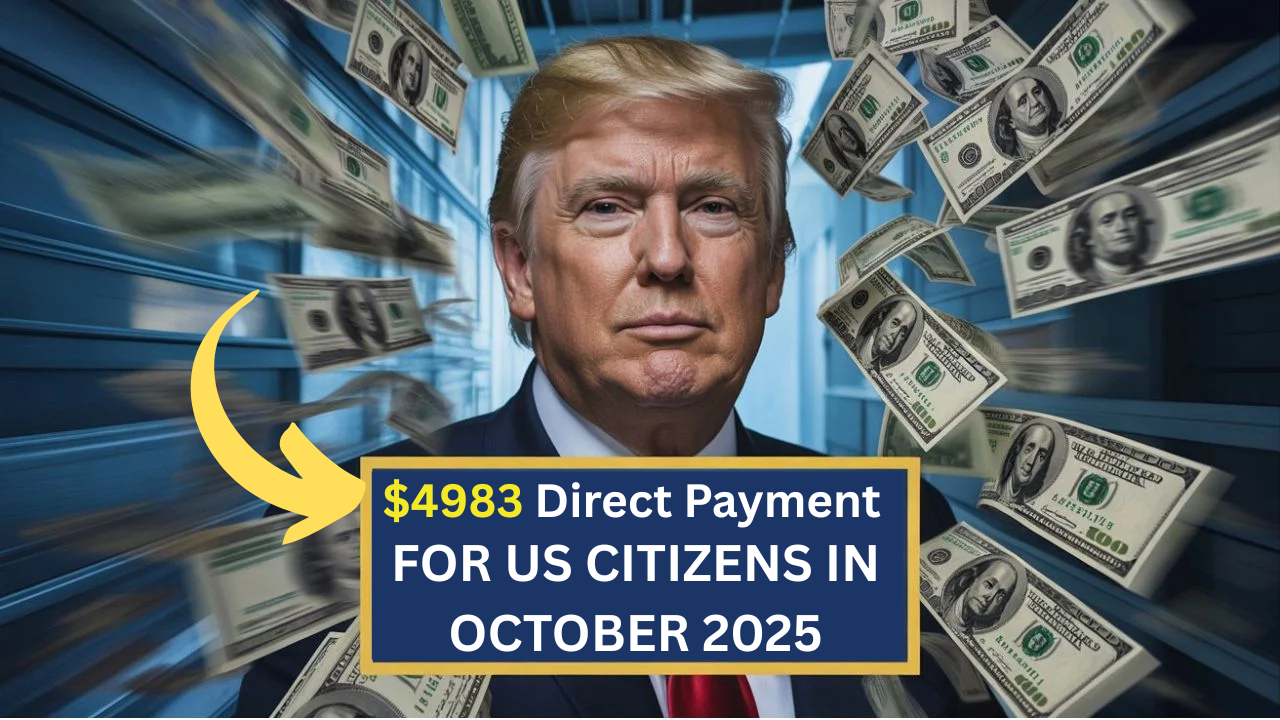$4,983 Direct Deposit :At a time when rising costs continue to challenge millions of Americans, a new wave of financial relief has captured the nation’s attention—a $4,983 direct deposit payment, reportedly scheduled to reach eligible US citizens in October 2025. This news comes at a time when many families are struggling to meet essential expenses like rent, food, healthcare, and transportation. Although it’s not officially a “stimulus check,” this payment initiative aims to provide targeted financial assistance to those who need it most.
Let’s take a closer look at what this $4,983 payment means, who is eligible, how to claim it, and when you can expect it in your bank account.
Also Read…The Kennedy Half Dollar Valued at $5.9 Million, Still in Circulation
What is a $4,983 Direct Deposit Payment?
The $4,983 direct deposit is part of a federal relief initiative coordinated by the IRS and the Treasury Department to assist low- and moderate-income citizens. This payment may be linked to tax credits, benefit adjustments, or retroactive refunds under existing relief programs such as the Earned Income Tax Credit (EITC), Social Security adjustments, or IRS correction payments from prior tax filings.
Its purpose is simple – to help citizens overcome inflationary pressures and stabilize household budgets before the end of 2025.
New US Driver’s License Rules for Seniors – What Drivers Over 70 Need to Know
What Are the Eligibility Criteria?
Not everyone will be eligible for a direct deposit of $4,983. The IRS and related agencies use income data, tax filings, and benefit records to determine eligibility. Here’s the information we’ve received so far:
- U.S. Citizenship or Permanent Residency – Only U.S. citizens or legal residents with a valid Social Security number are eligible.
- Filed 2023 or 2024 tax return – Applicants must have filed tax returns within the last two years to ensure eligibility tracking.
- Income Limits –
- Individuals earning less than $75,000 annually may be eligible.
- Married couples earning less than $150,000 and filing jointly may also be eligible.
4. Dependents and Families – Families with dependents may receive the full $4,983, depending on the number of eligible children or dependents.
5. Social Security and Disability Recipients – Beneficiaries under SSI, SSDI, or Veterans Affairs programs may be automatically eligible if their information is updated with the IRS.
Payment Dates – When Will You Get It?
According to the tentative schedule, payments are expected to begin in mid-October 2025, with the IRS prioritizing direct deposit transfers first.
Here are the general timelines:
- October 15-25, 2025: Direct deposits for eligible citizens with verified banking information.
- October 28-November 10, 2025: Paper checks will be mailed to those without an active direct deposit system.
- Late November 2025: Payments will be corrected or reissued for processing errors or late verifications.
Payment schedules may vary based on IRS system updates, eligibility reviews, and banking delays, so it’s best to monitor the IRS “Get My Payment” portal for real-time updates.
How to Check Your eligibility and Claim A Payment
If you believe you are eligible, you must:
- Visit the IRS’s official website – log in to your IRS account or create an account on irs.gov.
- Use the “Get My Payment” tool – This tool allows you to check your payment status, eligibility, and deposit details.
- Verify your bank information – Make sure your direct deposit information is correct to avoid check delays.
- File any missed tax returns – If you haven’t filed a return for 2023 or 2024, submit it immediately to update your eligibility information.
- Keep an eye out for email or mail notifications – The IRS may send notifications about your payment status or verification requests.
Why is This Payment Important?
This $4,983 deposit is a financial cushion for millions of people facing rising living costs. For many, it could mean paying outstanding bills, buying essential groceries, or saving for emergencies. The federal government aims to stimulate local economies by giving citizens spending power during a time of high inflation and stagnant wages.
Beware of scams
The IRS never asks taxpayers for banking information via text, social media, or unsolicited email. Always verify payment information with official government sources and avoid clicking on suspicious links.
Final Thoughts
Whether you’re retired, a working parent, or a low-income earner, a direct deposit of $4,983 in October 2025 could provide significant relief. Make sure your tax filings are current, your bank information is accurate, and you stay on top of official updates from the IRS.
For many Americans, this payment won’t just be about money—it’ll be about hope, stability, and improvement after years of financial uncertainty.
FAQs
Q 1. Is the $4,983 payment taxable?
No. This payment is classified as relief assistance and is not considered taxable income.
Q 2. Do I need to apply for the payment?
Generally, no. If you recently filed your tax return and meet the eligibility criteria, the payment should be processed automatically.
Q 3. Can seniors and veterans receive it?
Yes. Seniors receiving Social Security, SSDI, or VA benefits may be automatically eligible if their records are current with the IRS.
Q 4. What if I haven’t filed taxes recently?
To be considered for the October payment, you must file your 2023 or 2024 tax return before the cutoff date.
Q 5. Where can I check for updates?
Visit the official IRS website at www.irs.gov
and use the “Get My Payment” tool to verify information.
Disclaimer: This article is for informational purposes only and does not represent an official IRS communication. Always verify program details from official federal sources before taking any action.

